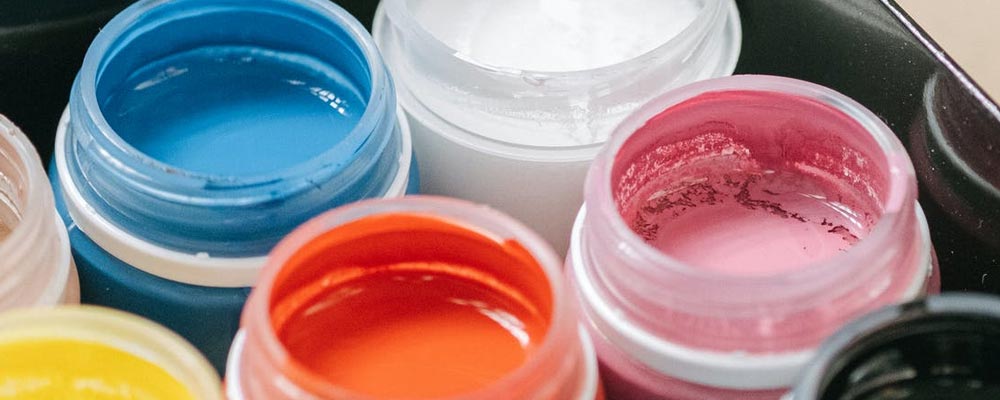Application of non-metallic mineral fillers in coatings
Coating is a fluid (viscous liquid) or powdery substance. It can be dried and solidified to form a hard film on the surface of the object. It has good adhesion and can evenly cover the surface of the object. Regardless of whether it contains pigments, it is commonly referred to as paint.
The main film-forming substances of coatings include oil, resin, and inorganic cementing materials, and the secondary film-forming substances include coloring pigments, extender pigments, and special pigments, all of which are curing components. The auxiliary film-forming substances of coatings include additives and solvents, which are volatile components.
Extender pigments, also known as fillers, are derived from natural minerals and industrial by-products and are inexpensive. Initially they were used in coatings to reduce costs. It has no tinting power and hiding power in the coating film. With the development of technology, it is found that it can be used in conjunction with coloring pigments to increase the thickness of the coating film and improve the performance of the coating. Therefore, extender pigments are not pigments.
Pigments include stone green, cinnabar, mineral pigments, phthalocyanine green, phthalocyanine blue, etc., and extender pigments include calcium carbonate, talc, kaolin, bentonite, and sulfuric acid dam.

The basic requirements of coatings for fillers
High whiteness; soft texture, good dispersion; low oil absorption; can make the coating have good leveling; it has good compatibility with other ingredients in the coating without chemical reaction; it has a proper surface area; Definite particle shape and crystal form; with definite particle size and narrow particle size distribution.
Non-metallic mineral fillers include calcium carbonate, barium sulfate, talc, wollastonite, kaolin, bentonite, diatomite, etc.
Application of non-metallic mineral fillers in coatings
- Calcium carbonate
Heavy calcium is the world’s largest filler in coatings. It can be used in various internal and external coatings. It is most suitable for water-based coatings. Its poor acid resistance hinders its application in external coatings.
The heavy calcium used in the coating industry is mainly used to partially replace titanium dioxide and color pigments, replace light calcium and precipitated calcium carbonate, anti-corrosion, and partially replace anti-rust pigments, in addition to being used for increments.
When heavy calcium is used in interior architectural paint, it can be used alone or in combination with talc. Compared with talcum powder, calcium carbonate can reduce the pulverization rate, improve the color retention of light-colored paints and increase the anti-fungal properties.
Compared with heavy calcium, light calcium has a small particle size and a narrow particle size distribution range, high oil absorption and brightness. Light calcium can be used where the greatest matting effect is required. It is more common to mix light calcium and heavy calcium in semi-gloss, dull paint and matt latex paint.
- Barium sulfate
Low oil absorption, high whiteness, fine texture, anti-blooming, anti-rust pollution, often used in anti-corrosion coatings, powder coatings, and floor coatings. It can improve the hardness and abrasion resistance of the paint film. It is one of the commonly used fillers for coatings. The disadvantage is that the density is high and the paint is easy to precipitate.
- Talcum powder
It is not easy to settle and can suspend the pigment. Even if it sinks, it is very easy to stir up again, which can prevent the paint from sagging. It can absorb expansion and contraction stress during application, avoid the morbid state of cracks and voids, and is suitable for outdoor paint and washable and wear-resistant paint. Talc can be used in a variety of industrial coatings, especially primers. The primer for steel structure can be used in whole or in part with talcum powder, which can improve the precipitation of the coating, the mechanical force of the coating film and the recoatability. It is suitable for metal primer and paint for transportation vehicles.
- Wollastonite
It can improve the abrasion resistance and durability of the coating film, and can be used as a paint filler to prepare high-quality white paint and bright and pure color paint. It can be used as a good flattening agent, can make the coating smooth and delicate, can overcome the shortcomings of peeling and peeling of the coating, and has good anti-chalking ability.
- Kaolin
Kaolin has a soft texture, and when used in latex paint, it can improve the suspension, prevent pigment settling, increase the hiding power of titanium dioxide in the paint, and increase the thickness of the coating film, but it has greater water absorption.
- Bentonite
Bentonite is mostly yellow or pink in color, and its application amount for formulas that require high whiteness is limited to a certain extent.
- Diatomite
With large porosity, strong adsorption, light weight and high melting point, it can be used as an additive for latex paint functional materials for thermal insulation, mildew resistance and sound absorption.
Article source: China Powder Network
